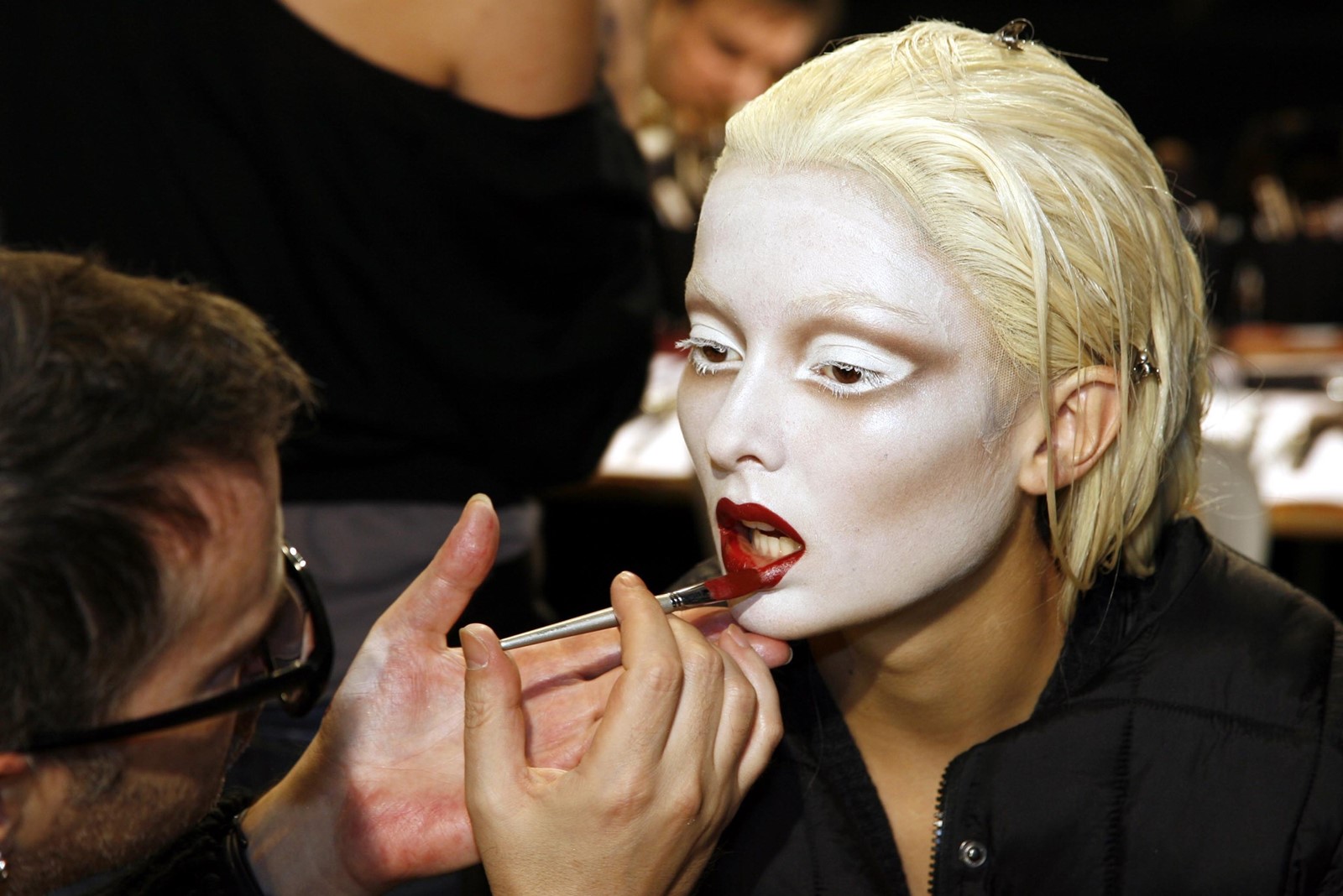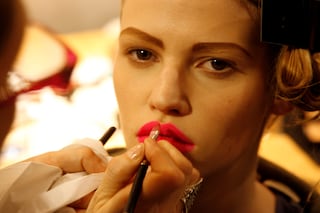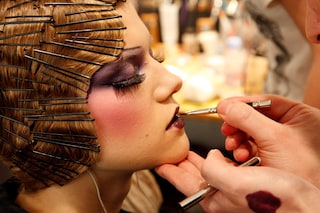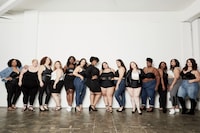As TikTok trends, celebrities and shows like Euphoria increasingly impact trends, has runway beauty lost its importance? Kristen Bateman talks to make-up legend Peter Philips about the future of backstage beauty
It’s the day of Dior’s SS24 show in Paris and Peter Philips, the legendary Belgian make-up artist and current creative and image director of Christian Dior Makeup, is brushing black eyeliner onto the centre of 78 different models’ lips. The striking look is more dramatic up close than it later seemed from far away, and firmly leans into the idea of all things witchy, as inspired by creative director Maria Grazia Chuiri’s messaging about powerful women and stereotypes throughout history.
Philips, undoubtedly one of the most well-known backstage veterans, has spearheaded make-up for everyone, including Lee Alexander McQueen, Karl Lagerfeld at Chanel and Dries Van Noten. But times are changing, and in a world where social media dominates, backstage beauty feels more different now than it ever has before – with many make-up artists prioritising other opportunities.
Pre-social media, the make-up artists, hair stylists and nail artists behind the shows were the ones who were breaking the news about what the latest and greatest beauty looks were – and backstage was a place that was incredibly important to beauty editors. Today, the looks are all up on Instagram and TikTok before anyone has a chance to put a pen to paper. Meanwhile, celebrities, pop culture and TV shows like Euphoria are increasingly dominating the trends we wear in real life.
After a busy day of making up the models, Philips sat down with us to talk about the future of backstage beauty, what it represents today, and the direction it’s going.
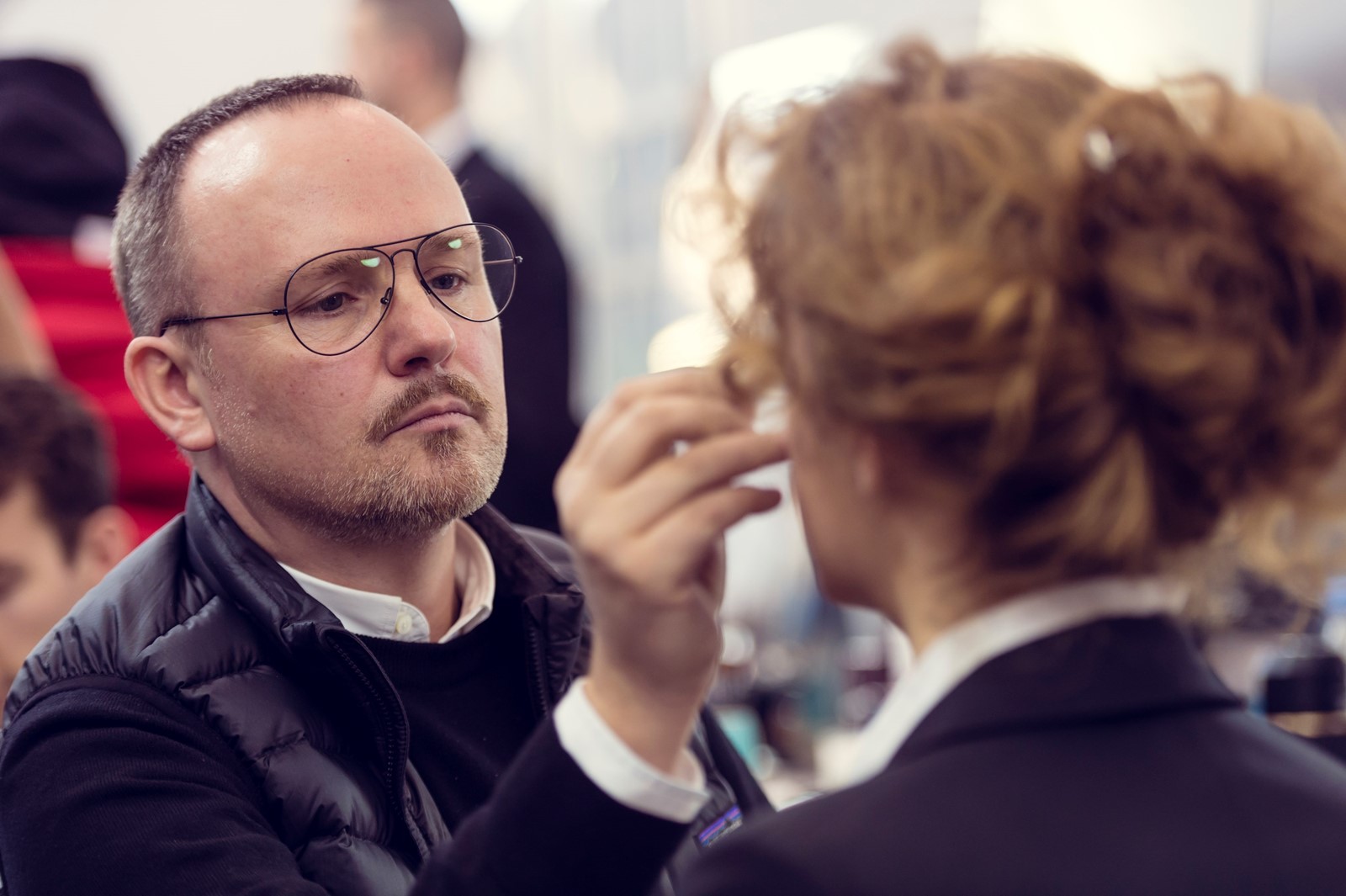
What’s the biggest change that you’ve seen with backstage beauty over the years?
Peter Philips: Well, I’m in a particular situation because it’s Dior, and the backstage is actually linked because not only do we showcase a new collection of clothes, but we also showcase our beauty products. It’s kind of like a total package. It’s like the backstage became almost a catalogue, because I see the journalists and influencers backstage, and I can take the opportunity to talk a little bit about a new product or say something about something that might be coming up soon.
So, in that context, it’s evolved totally. We really use that platform now also to communicate our new products. But in general, I think the backstage really evolved as it’s almost as important and sometimes even more exciting than any show. The backstage becomes almost a place to be seen, to be shown and to communicate, which I think is a bit sad because I love the intimacy of the backstage.
How has social media impacted backstage beauty?
Peter Philips: Social media impacts every aspect of everybody’s life. When we do our backstage at Dior, we know from the moment we enter, we have our badge on. We start working. We know everything is now made to be seen and exposed. It’s not just the end result of what we do.
Do you feel like backstage beauty has become a little bit more limiting creatively? If you were doing a beauty look in the 90s or the early 2000s, do you feel like you had more creative freedom backstage versus now?
Peter Philips: It really depends on the designer. Now, for example, with Maria Grazia, I don’t feel I have creative liberty, but on the other hand, I also don’t feel limited because there’s a trusting relationship between Maria Grazia, Guido Palau and me. At the end of the day, it’s not the Peter Philip show, it’s the Maria Grazia Chiuri show. It’s her vision. And Guido also knows that. And together, we work hand-in-hand to make sure that her vision is completed with a look.
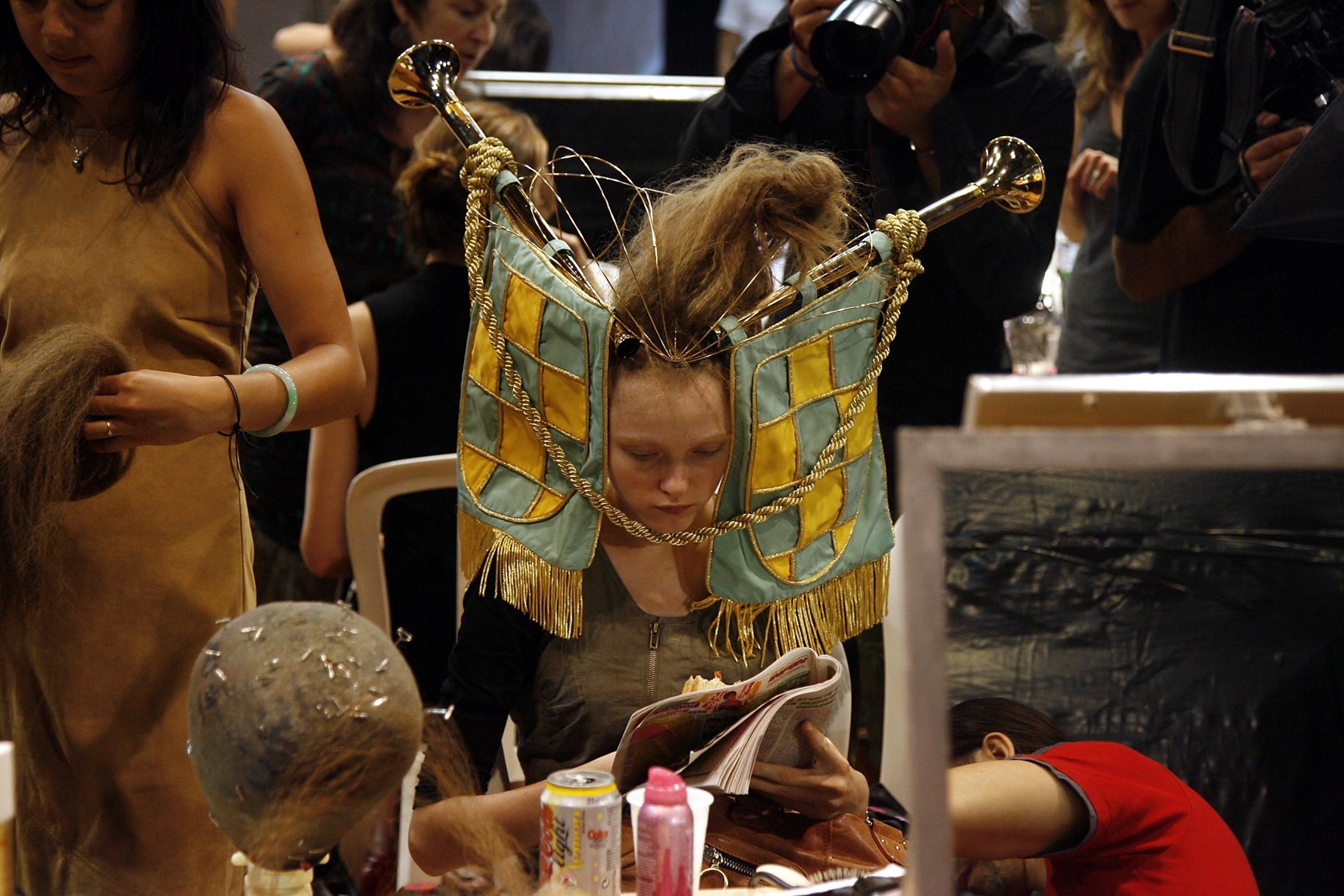
I feel like backstage beauty today is very dominated by the products, like you said. But I’m curious, when you first started out, did you feel like you had to use one kind of products, or were you just using anything?
Peter Philips: I could use anything, but also there was not so much available. Now there’s so many products available you can do anything, you can find anything. In the old days, you had to mix it up yourself and figure it out with all kinds of theatre make-up and stuff like that, which you could blend in and mix. And even glitters – I mean now you can get glitters anywhere, in as many colours and shades as you want. In the old days, especially when you’re from Belgium, there was not a beauty scene or fashion scene, so we didn’t have so many boutiques. We had to play with the tools that we had. And actually, those limitations made it actually extremely exciting to find something, to create something new. But now there‘s much more available.
Do you have a couple of favourite backstage moments throughout your career?
Peter Philips: Well, I had a great backstage moment yesterday: Charlize Theron came backstage. She came up to me and she said, ‘Hey, Pete’, and hugged me and I was the biggest envy of all. I felt like a star.

What about when you are thinking of a new look that you want to do? Has that process changed at all?
Peter Philips: I’m sure if I would’ve got this brief 20 years ago, it would’ve looked different. I would maybe try to do too much because you do too much and you experiment and sometimes make it more complicated. At the end of the day, I’ve been doing so many shoots and shows over the years, you get some sort of expertise. You kind of know what’s possible and what’s not possible. You know the limitations.
Do you feel like backstage beauty is still as influential as it used to be?
Peter Philips: I don’t think the idea of a backstage look is to be influential. The backstage look is at the service of the designer’s vision, it’s as simple as that. And with hair and make-up and music, DJ, the set design, the collaborations, they’re all there to complete the fashion, the designer’s vision. [For example], I would never send a girl outside for spring with this black liner and no mascara and not even a hint of blush. I would tone down the black, maybe do a beautiful Rosewood stain, add a bit of blush, a bit of mascara and voila, there you go. But you can make it less extreme, a bit more feminine, a bit more pretty in a way [by changing the technique and the proportion]. And everybody can do this. I don’t say this backstage make-up is a trend, but there are different ways to interpret it, to make it a trend and adapt it to your personality.
Join Dazed Club and be part of our world! You get exclusive access to events, parties, festivals and our editors, as well as a free subscription to Dazed for a year. Join for £5/month today.
